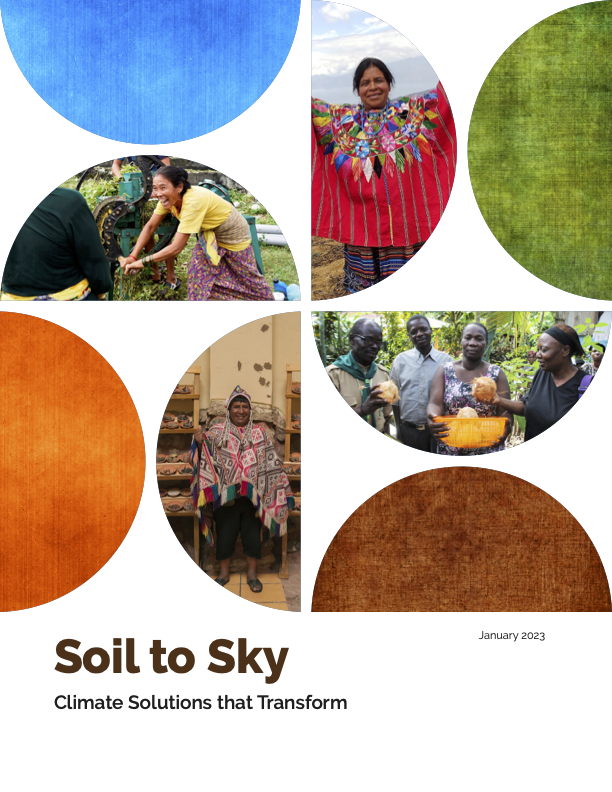
Soil to Sky: Climate Solutions That Transform
Grassroots movements are mitigating climate change and transforming the global food and energy sectors; increased philanthropic investment could be catalytic.
Soil to Sky: Climate Solutions That Transform connects the dots between specific stories of change and global impact, demonstrating how grassroots movements are already forging transitions from extractive agriculture and energy production to agroecological systems and equitable energy generation.
Three years after the release of our acclaimed report Soil to Sky: Climate Solutions That Work, this edition provides further evidence that grassroots movements are best positioned to shift the global food and energy sectors from the dominant extractive models to regenerative ones.
Societies must undergo unprecedented transformation to limit global warming to 1.5°C and prevent catastrophic impacts to the planet and its communities. Soil to Sky: Climate Solutions That Transform uplifts the solutions that have the potential to mitigate and reverse the most urgent crisis of our time. You can download the report here.
“Soil to Sky: Climate Solutions that Transform connects the dots between stories of social change and their scaled impact on climate outcomes in the food and energy sectors. It shows the roadmap of how grassroots movements are laying the groundwork for regenerative, equitable solutions that drawdown emissions. This report is a must-read for any funder seeking inspiration from community-led change in the two most polluting sectors globally.”
Kate Kroeger, Executive Director, Urgent Action Fund for Women’s Human Rights
“Soil to Sky: Climate Solutions that Transform provides unequivocal research and evidence that the solutions already exist for food and energy transition. This report is an invaluable resource in outlining the who, what, and how of funding those at the frontlines of the climate crisis.”
Chung-Wha Hong, Executive Director, Grassroots International
Highlights:
- Climate change is one of the most significant ecological, political, and humanitarian crises of our time, with low-income countries and communities facing the harshest consequences, despite their small historical contribution to global emissions. For the past few years, the Global North has contributed 92% of global emissions, with per capita emissions triple those in the Global South.
- The root causes of the climate crisis are most prominent in food and energy production—the largest emitting sectors globally, accounting for up to 75% of total annual emissions.
- Climate funding has typically focused on symptoms of the problem, rather than upstream drivers. The report unpacks what ‘false solutions’ are and how they serve as red herrings when more effective, impactful solutions exist.
- Long-standing efforts to decentralize and democratize food production through agroecology are advancing a more just and nutritious food system. Agroecology has the potential to reduce 490 gigatons of CO₂e by 2050, roughly equivalent to emissions from China between now and 2050.
- Community governance of renewable energy and resistance to extractivism can phase out global dependence on fossil fuels and prevent further harm from the climate crisis. Keeping fossil fuels in the ground and eliminating emissions from resource extraction has the potential to reduce 1,300 gigatons of CO₂e by 2050, roughly equivalent to the standing stock of all global forests.
- Grassroots solutions remain underfunded and overlooked by mainstream philanthropy, despite representing the greatest opportunity to invest in transformative climate action.
Soil to Sky: Climate Solutions that Transform is also available in Spanish, French, and Portuguese.
Designed by Sylvia Weir.